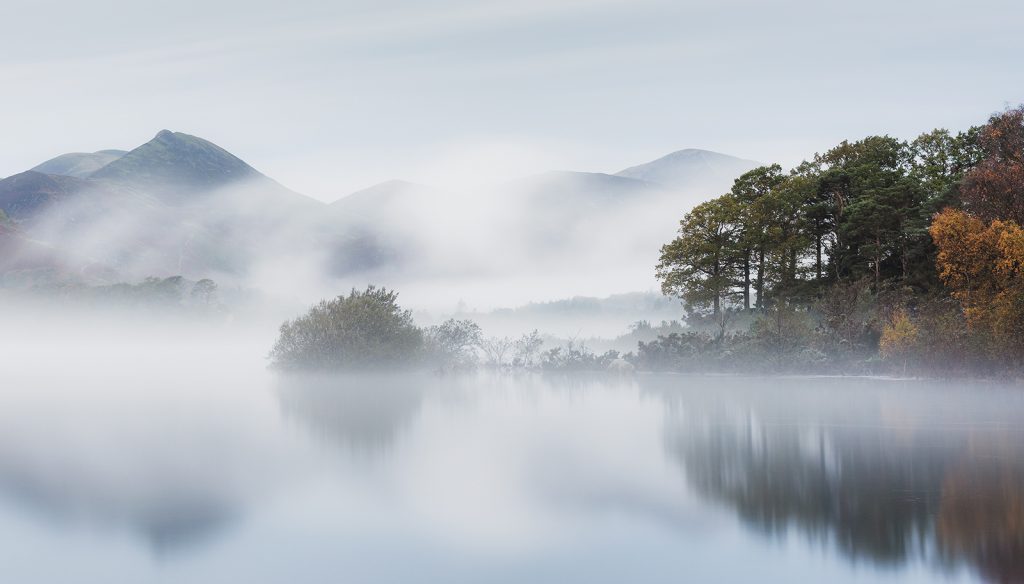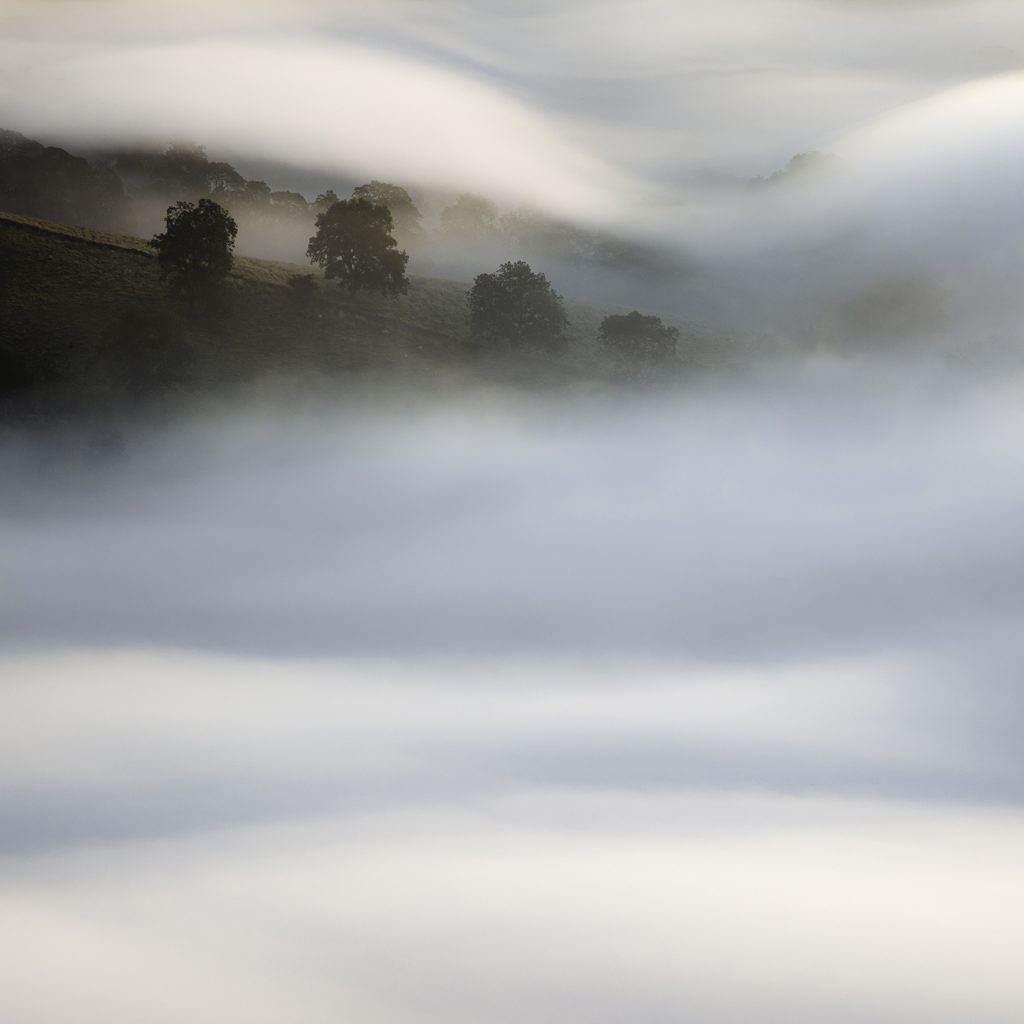Approach to landscape photography – Rod Ireland
Approach to Landscape Photography – Rod Ireland
I’d like to think that my images ‘speak’ for themselves, standing on their own two feet without the need for further explanation. Yet, when Kase Filters UK asked me to describe my approach to landscape photography it was a perfect opportunity to stop and consider where I’ve been and where I’m heading on my photography journey, as well as reflecting on why I take the images I do.
I moved to Wales in 1995 from an urban environment in the North of England. This was the start point for my appreciation of the UK’s variety of sublime and inspirational landscapes. The mountains of Snowdonia shook me, sparking an interest that was to shape my life from that point forwards.
In 2001, I was lucky enough to get the chance to move to the Lake District, helping seal what’s become a lifelong passion for getting into the landscape to discover, explore, learn and capture images. I’d owned a film SLR from the mid-80s but this change in location was a catalyst, a start point that was to see photography become a central component of my life and identity.

My love for Photography and the outdoors are inextricably linked, one fuelling the other. What I learn in one sphere informs the other and together these interests help me gain a broader appreciation and understanding of the environment that I’m attempting to capture in fleeting moments of time.
For a long time, I’d considered my photographic approach to be very methodical from initial conception of an idea, through to the planning and final execution of the shot. Often, the satisfaction of creating images came from the knowledge that many hours of effort and/or repeated visits were required to achieve the result. To some degree, this is still how many of my images are created yet over the past couple of years a more nuanced and varied my approach to photography has emerged.
Undoubtedly, one of the things contributing to the broadening of my photographic outlook has been the use of different cameras and formats. Having rediscovered my love for film photography in the past couple of years, I’ve been shooting with a variety of film cameras from SLRs to Medium format TLR cameras, through to ‘Toy’ Holga and Diana cameras.
In some instances, using film has made me even more methodical, trying to be certain that everything is right before releasing the shutter. On the other hand, using cameras such as the Holga 120, or the point and shoot Olympus Trip has freed me up to just focus on image composition with little mental capacity being taken up worrying about camera settings.

The improvement in phone cameras has also meant that I’ve been able to be more reactive to scenes that emerge around me and can ‘grab’ a shot in a matter of seconds. All together, I now have a selection of approaches to my photography and am able to choose that which best suits the time and subject as presented.
As well as my first love (classic landscape vistas) I take inspiration from other aspects of the visual world including the near landscape or landscape within; urban architectural subjects; scenes of decay and dereliction through to creation of pure abstracts from a scene. I would always encourage photographers to explore other genres with a view to taking lessons learnt from one field and transferring these to others.
Learning to recognise elements of design within a variety of scenes is an invaluable skill to develop – identifying lines, shapes, patters, forms, colours etc has helped me to create images that I wouldn’t previously have been able to identify.
Living in the lake district, I’m spoilt with a variety of classic photography locations but being close to Ullswater means it’s at the top of my list of favourite locations. Further afield the Yorkshire Dales, Northumberland, Yorkshire coastline, Snowdonia and Scotland are frequently visited. Despite travelling around the UK to create images, I believe the best images come from exploration of the creative potential within your own mind rather than the physical location you find yourself in. I’ve seen (and taken!) some poor images in stunning places, whilst some of the images I’m fondest of were taken at innocuous or mundane locations.

I’m a strong advocate of the idea that it’s not about the gear, rather it’s about an individuals creativity and perseverance that results in great images. However, the technical elements within an image can’t be ignored and for many shots having the right equipment can be the difference between delivering your vision for an image or deleting it into the ether.
Thinking specifically about filters my first consideration is “are they necessary for this shot”? If I can’t rationalise using them for an image, then I won’t. (I’ve seen many clients on workshops who habitually use filters for virtually every shot, even when there’s no real requirement to use them).
So, I don’t use filters all the time, but there’s hardly an occasion when I head out without having filters at the ready. When you do need them, they can be a life saver. There are three categories of filters I use (for digital photography):

Neutral Density Graduated filters – Even with the broad dynamic range of modern DSLRs (I use a Nikon D810) there are occasions when modifying the light coming into the camera is my preferred means of reducing an imbalance of brightness/contrast across a scene.
On most occasions for me, this will be bright skies that need managing (darkening) in order that I can retain detail by ensuring a lighter foreground. Living in the lake district I mostly use filters with a soft graduation as to give a gentle transition which better suits the uneven mountainous skyline. If I’m off to the coast, a hard graduation ND filter will be in the bag.
Neutral density filters – Over time, my images have moved along the spectrum from realist, to interpretation and often entering the abstract. An important creative tool for me in this respect is controlling the length of exposure and choosing a shutter speed that enables me to render a scene in a particular way. The classic example is having a longer shutter speed to present moving water in an expressive fashion, but I might also use an ND filter to render movement in vegetation and clouds, or even when doing Intentional Camera Movement (ICM). Sometimes a 2 stop ND is all that is required, whilst during bright daylight I might use a 10 stop filter, combined with a 3 stop filter to hold back as much light as possible and enabling me to reach into exposure lengths of two or three minutes.
Polarising filter – The polarising filter is the filter I use most and my recommendation to beginner clients is “if you only get one filter, get a polarising filter”. It is a versatile piece of kit and serves a number of purposes in my photography. Rendering surfaces transparent (or controlling varying degrees of transparency). Reducing glare and helping to manage levels of contrast in a scene. Improving the saturation of colours (usually in woodland as opposed to using it to enhance blue skies – not much call for that in Cumbria!) Last but not least, it makes a great makeshift ND filter which can hold back a couple of stops of light. The feature I particularly like about the KASE system is the integrated wheel that allows rotation of the polariser whilst retaining the filter holder and any ND grads in use in position.

It’s pretty easy to draw inspiration from the outstanding photographic locations we’re blessed with in the UK but as a final note, I’d always encourage the photographer to push themselves to try and produce work that has an original aspect to it.
Once you’ve bagged the ‘classic’ composition at a location try and do something else, try and get your own shot.
Have a random wander around an area, actively seeking out alternative viewpoints and opportunities. Look at all the ingredients on offer within a scene and try to distil these down to a minimum in your composition (switching from a wide angle lens to something longer will help you strip out unnecessary elements).
The level of satisfaction of creating your own personal composition from an otherwise well know scene, will always outweigh that of creating a competent technical copy of someone else’s vision.
Rod is a full-time professional photographer living in the Lake District and a Kase Pro Partner. He runs photography workshops & holidays across the UK as well as exhibiting and selling his landscape work. Rod curates “The Northern Photography and Video Show” which he runs in partnership with the Rheged exhibition centre each year.
In combination with his photographic interests, he’s a qualified Mountain Leader and John Muir Award holder. He works with individuals and groups of all ages, helping to connect them to the outdoors through the medium of photography.
https://www.rodireland.co.uk/
https://www.instagram.com/rodirelandphotography/
https://twitter.com/RodIrelandphoto
https://www.facebook.com/rodirelandphoto/






